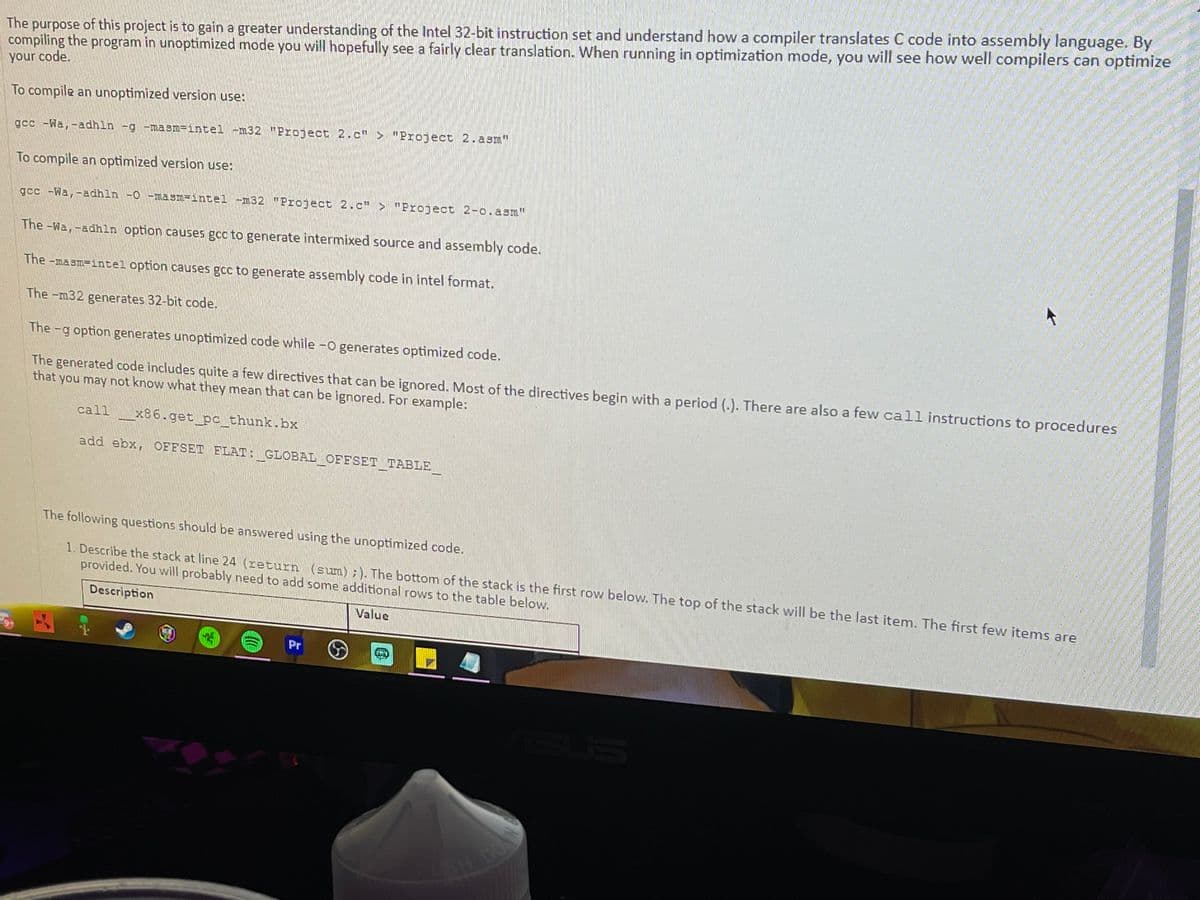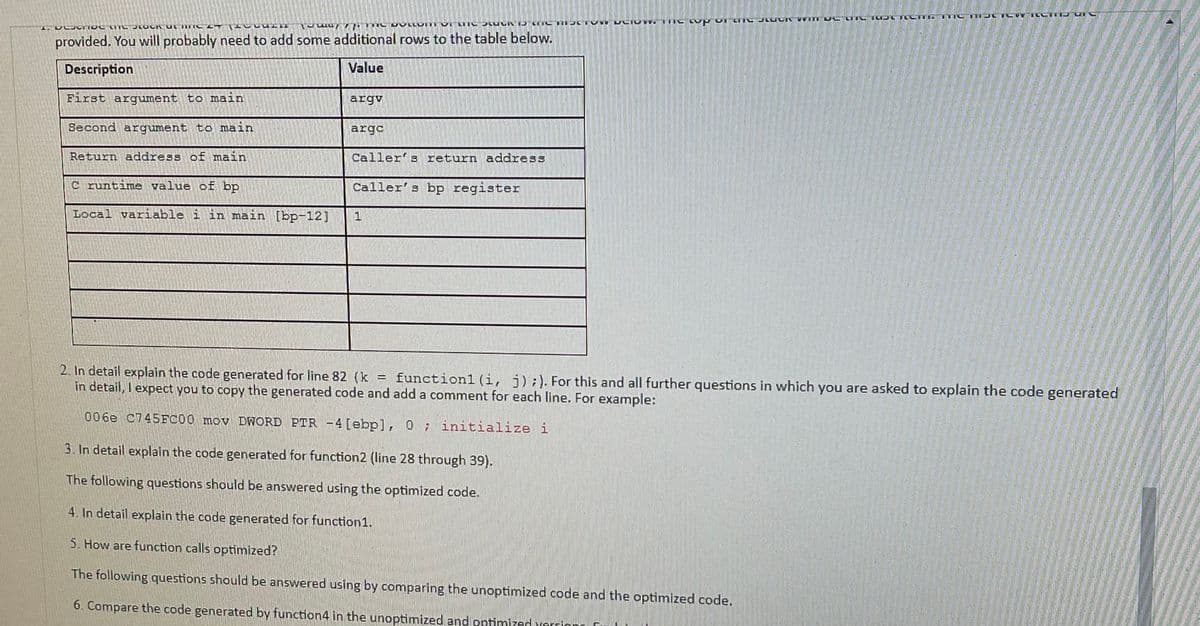3. In detail explain the code generated for function2 (line 28 through 39). The following questions should be answered using the optimized code. 4. In detail explain the code generated for function1. 5. How are function calls optimized? The following questions should be answered using by comparing the unoptimized code and the optimized code. 6. Compare the code
/* GCC */
/* gcc -Wa,-adhln -g -masm=intel -m32 "Project 2.c" > "Project 2-g.asm" */
/* gcc -Wa,-adhln -O -masm=intel -m32 "Project 2.c" > "Project 2-o.asm" */
#include <stdio.h>
#define NOINLINE __attribute__ ((noinline))
static NOINLINE int function1(int x, int y)
{
int i;
int sum;
int values[10];
sum = 0;
for (i = 0; i < 10; i++) {
values[i] = 10 * i + x * y;
sum += values[i];
}
return (sum);
}
static int NOINLINE function2(int *values, int valuesLen)
{
int i;
int sum;
sum = 0;
for (i = 0; i < valuesLen; i++) {
sum += values[i];
}
return (sum);
}
static NOINLINE int function3(int x)
{
int y;
y = x / 10;
return (y);
}
static NOINLINE int function4(int a, int b, int c, int d)
{
int r;
if (a > b)
r = a;
else if (a > c)
r = 2 * a;
else if (a > d)
r = 3 * a;
else
r = -1;
return (r);
}
int main(int argc, char **argv)
{
int i;
int j;
int k;
int values[10];
i = 1;
j = 2;
k = function1(i, j);
printf("function1: i = %d, j = %d, k = %d\n", i, j, k);
for (i = 0; i < 10; i++) {
values[i] = i;
}
k = function2(values, 10);
printf("function2: k = %d\n", k);
k = function3(100);
printf("function3: k = %d\n", k);
k = function4(1, 2, 3, 4);
printf("function4: k = %d\n", k);
return (0);
}
question 3-6


Trending now
This is a popular solution!
Step by step
Solved in 4 steps

In detail explain the code generated for function3. This a very hard. Try your best. Why is the compiler doing this?








